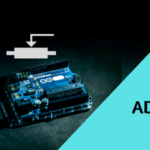Index
In Arduino, digital I/O (Input/Output) lets you control and read binary states on the pins, meaning they can either be on (HIGH) or off (LOW). We’ll explore digital write and read functions through an example where a switch controls an LED.
Objective:
Use a pushbutton switch to turn an LED on and off.
Required Components:
- Arduino Uno
- LED
- 220-ohm resistor (for LED)
- Pushbutton switch
- 10k-ohm resistor (for pull-down configuration)
- Breadboard and jumper wires
Circuit Setup:
- LED Circuit:
- Connect the longer leg (anode) of the LED to digital pin 9 on the Arduino through a 220-ohm resistor.
- Connect the shorter leg (cathode) of the LED to GND on the Arduino.
- Button Circuit:
- Connect one side of the pushbutton to 5V on the Arduino.
- Connect the other side of the button to digital pin 7 on the Arduino.
- Place a 10k-ohm resistor between the button’s other side and GND (for a pull-down resistor).
Code Explanation:
In this example, we’ll write code that reads the state of the button using digitalRead(), and if the button is pressed, it will turn on the LED by writing HIGH to the LED pin using digitalWrite().
Code:
// Define pinsconst int ledPin = 9; // LED connected to digital pin 9const int buttonPin = 7; // Pushbutton connected to digital pin 7void setup() { // Set pin modes pinMode(ledPin, OUTPUT); // Set LED pin as output pinMode(buttonPin, INPUT); // Set button pin as input}void loop() { // Read the state of the button int buttonState = digitalRead(buttonPin); // Check if the button is pressed if (buttonState == HIGH) { // Turn on the LED digitalWrite(ledPin, HIGH); } else { // Turn off the LED digitalWrite(ledPin, LOW); }} |
Code Breakdown:
- Setup Function:
pinMode(ledPin, OUTPUT);sets the LED pin as an output.pinMode(buttonPin, INPUT);sets the button pin as an input.
- Loop Function:
digitalRead(buttonPin);reads the state of the button pin and stores it inbuttonState.- If
buttonStateis HIGH (indicating the button is pressed),digitalWrite(ledPin, HIGH);turns the LED on. - If
buttonStateis LOW (button not pressed),digitalWrite(ledPin, LOW);turns the LED off.
How It Works:
- When the button is pressed, it connects to 5V, making the buttonPin HIGH. This triggers the
ifstatement, and the LED turns on. - When the button is not pressed, the pull-down resistor keeps the buttonPin at LOW, turning the LED off.
This simple example demonstrates how to read digital input from a switch and control digital output to an LED.


